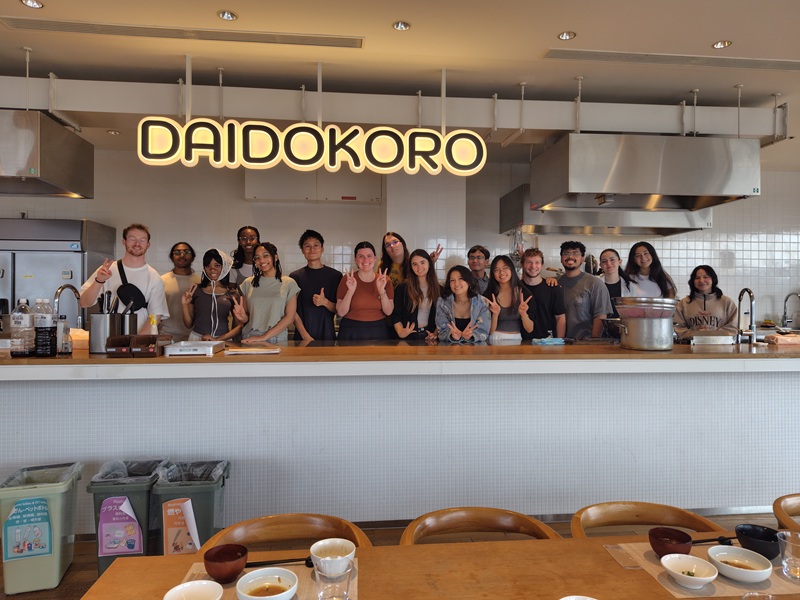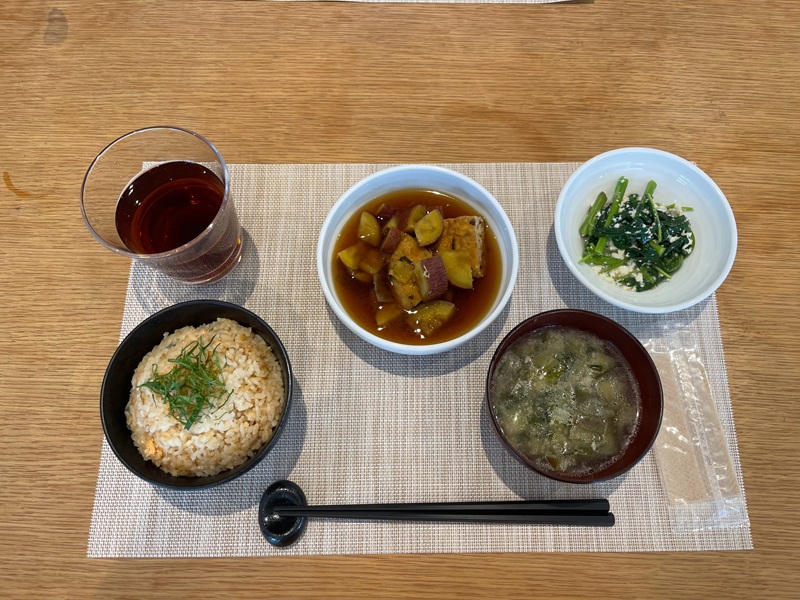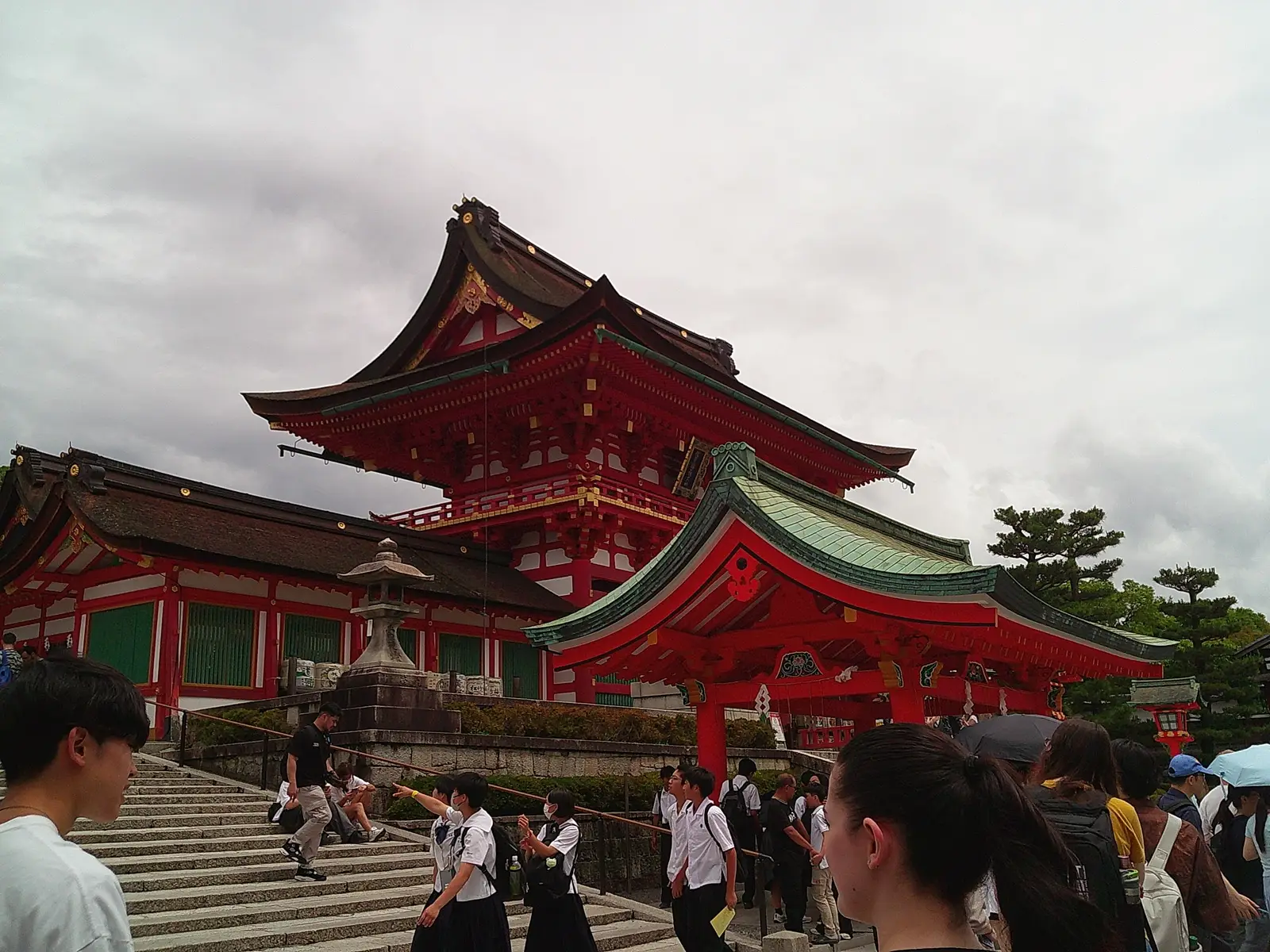Written by Ilana Goldman (William and Mary), Student Correspondent for CET Japan, Summer 2025
It was criminally early when I entered the konbini, rubbing exhaustion and new kanji and last night’s karaoke from my vision. Despite the too-bright aisles of the 7/11, the looming quizzes of the week and my first chapter test of the semester, beneath my yawn was a smile. There would be no class today; we were going to Kyoto.
Faithful onigiri in hand, I stepped outside to where my classmates and teachers were waiting, ready to begin the trek to the cultural capital of Japan. As a part of the language practice, we were given an itinerary and instructions to get from our local station to Kyoto completely by ourselves (although our CET professors were there to stop us from making any catastrophic mistakes).
Obanzai Cooking Experience
Our first destination was Daidokoro Community Kitchen, where we would be participating in an obanzai cooking class. Having accomplished little culinary activity myself — much less involving traditional Kyoto dishes with recipes in Japanese — I was already preparing to apologize to my classmates for the results. However, the instructors were not only helpful but encouraging, offering kind pointers on top of the Japanese cooking terms we’d learned in the days before.
After collectively celebrating a meal well made (which mostly involved expeditiously consuming it), our classes were split into small groups to head to Fushimi Inari Taisha, one of the oldest Shinto shrines in Kyoto. There to guide us were local university students, our brave (and patient) leaders on the next leg of the journey. We gave our rehearsed self-introductions, and if there were a few fumbled sentences here and there, our new guides were kind enough not to point them out.


The Temple Was Gorgeous! The Weather Was Not.
Eighty-five degrees with vindictive rain left us swimming through the humidity of Kyoto, but it did little to mute the striking beauty of Fushimi Inari Taisha. Before us were thousands of vermilion torii gates, some only recently constructed and a few with hundreds of years of history to them.
We looked around until the heat became unbearable, and were eventually rewarded with a sampling of Kyoto’s famous matcha, courtesy of our professors. I chose to abstain and immediately regretted it, eyeing my friend’s matcha iced latte with existential self-reproach (I quickly rebounded with strawberry daifuku).
At this point it was 2:20, the end of our normal class period; our teachers departed and the city was ours to explore.

Kyoto Student Appreciation
Some of the local university students chose to stay with us to continue sightseeing, one of whom was my group’s wonderful guide, Mikito. Practice in the classroom proved far, far different than conversing with native speakers, especially ones our age; however, a few short icebreaker questions later, we discovered plenty of common ground.
Bridging the gap between language barriers was a shared love of cinema, travel, anime, and a profound interest in each others’ culture. We even exchanged various slang in English and Japanese, the former of which included nonsense such as “lowkey,” “lock in,” and, yes, “cooked.” With limited vocabulary, both parties took immense joy (and impressive effort) in walking the other through definitions, situations, and practice with their silly new words. Although speaking and comprehension could be difficult, enjoyment and connection certainly wasn’t.
As a small group, we decided to hike back up to Fushimi Inari Taisha, this time ascending past the main temple to reach the city viewing area. It was hot, it was wet, and yet we were in absolute awe of the Kyoto sprawl below.

Worth Every Step
Following a warm farewell to Mikito (with promises to reconnect should we ever find ourselves in Kyoto again), we collected our energy enough to continue wandering. We shopped, sweated, navigated, and ate our way through as much of the city as we could, boarding the last of the 10 pm trains back to Osaka. Even if the rain washed some memories away, what remained was proof that a shared meal, a few new words, and a little curiosity can turn strangers into something closer to friends.